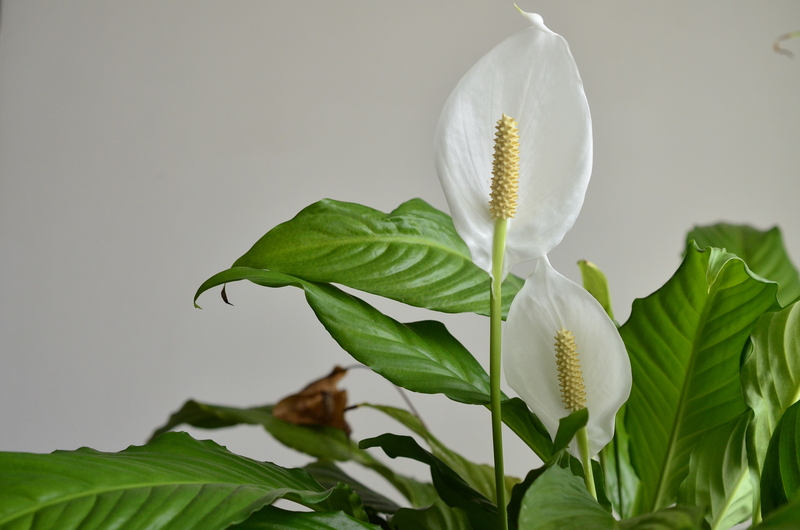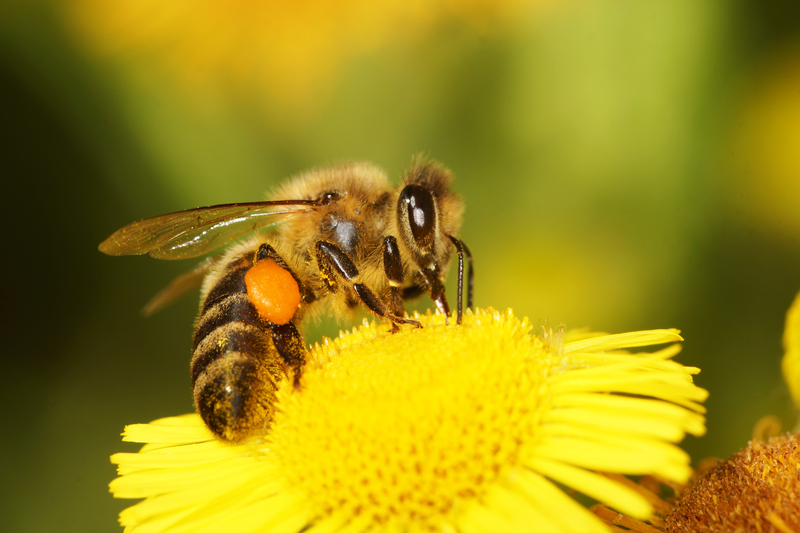Nurturing Your Orchids for Vibrant Growth
Posted on 20/05/2025
Orchids are among the most captivating plants, famed for their unrivaled beauty and exotic blooms. However, nurturing your orchids for vibrant growth requires understanding their unique needs. Whether you're a seasoned collector or a budding enthusiast, this thorough guide will empower you to cultivate healthy, flourishing orchids at home.
Understanding the Unique Needs of Orchids
Orchids belong to one of the largest and most diverse plant families on earth. Their intricate blooms and variety of species make them a favorite among indoor gardeners. Yet, their reputation for being "finicky" is often due to misconceptions about their care. Growing orchids with vigor starts with knowledge--let's break down what these treasures truly need.
- Light: Orchid species demand varying light levels.
- Humidity: Most orchids prefer moist air.
- Water: Overwatering is a frequent mistake in orchid care.
- Airflow: Good circulation diminishes disease risk.
- Nutrition: Orchids thrive with proper feeding.
- Repotting: Timely repotting supports healthy root systems.

Choosing the Ideal Orchid Variety for Your Space
Before diving into orchid care essentials, it's important to choose a variety that suits your environment. Here are three commonly grown orchids:
- Phalaenopsis (Moth Orchid): Highly adaptable, great for beginners. Flourishes in low to medium light.
- Cattleya: Known for their vibrant blooms; need bright, indirect light.
- Dendrobium: Tall and stately, prefer strong company of light and regular misting.
Finding the Right Orchid for Your Home
Consider your home's natural light and humidity when selecting your orchid. For example, south or east-facing windows often provide ideal conditions.
Lighting: The Spark of Healthy Orchid Growth
Orchid growth thrives with appropriate lighting. Insufficient light leads to weak, limp leaves and poor flowering, while too much can scorch your plant.
How Much Light Is Enough?
- Phalaenopsis: Best in filtered or shaded light. Direct sun can scorch leaves.
- Cattleya/Dendrobium: Love bright, indirect light. Avoid harsh midday sun.
A good rule of thumb: If you can read a newspaper in the light, it's probably suitable for most orchids. Monitor foliage--leaves should be bright-green rather than dark, olive, or yellow.
Watering: Mastering Moisture for Orchid Vitality
Water is crucial for nurturing your orchids for vibrant growth, yet overwatering is a common pitfall. Orchids typically prefer to dry out slightly between waterings.
The Best Way to Water Orchids
- Check the medium: Water when the top inch feels dry.
- Water thoroughly: Let water run through the pot, but ensure no standing water remains.
- Mornings are best: This allows excess moisture to evaporate, lowering the risk of rot.
Tip: Use room-temperature, filtered or rainwater. Hard tap water may cause mineral buildup on roots and leaves.
Humidity: Creating an Orchid-Friendly Atmosphere
Native to tropical regions, most orchids flourish in environments with humidity levels between 50-70%. Dry indoor air--especially common in winter--can threaten orchid health and bloom potential.
Ways to Enhance Humidity
- Use a humidity tray: Fill a shallow dish with pebbles and water; set pots atop so roots don't sit in water.
- Misting: Lightly mist leaves (not flowers) in the morning.
- Group plants: Cluster orchids together; plants "share" moisture.
- Invest in a humidifier: This is especially useful in dry climates.
Air Circulation: Preventing Pests and Diseases
Good air movement reduces the risk of fungal and bacterial diseases and discourages pests. A small, oscillating fan set on low near your orchids works wonders--just avoid blowing directly on delicate blooms.
Choosing the Right Potting Medium for Vivid Orchid Growth
Unlike common houseplants, orchids rarely thrive in regular potting soil. Instead, they need special mixes that mimic the bark, moss, and debris of their natural environment.
- Bark-based mixes: Great for many epiphytic orchids needing good drainage.
- Sphagnum moss: Retains more moisture for young or moisture-loving types.
- Charcoal and perlite: Added for drainage and to ward off bacteria.
Repotting Your Orchids
Orchids need repotting every 1-3 years to prevent root rot and replenish nutrients. Signs an orchid needs a new pot include crowded roots, decaying medium, or roots growing out of the pot.
- Gently remove the orchid from its pot.
- Trim away dead or mushy roots.
- Choose a slightly larger pot with drainage holes.
- Settle roots into new medium and water lightly.
Feeding Orchids for Maximum Bloom Power
Orchids in the wild absorb nutrients gradually. At home, regular but diluted feeding promotes vivid color and robust leaves.
How and What to Feed Your Orchids
- Orchid-specific fertilizers: Use balanced (20-20-20) formulas monthly. Always dilute to half-strength.
- Feed during active growth: Increase feeding when new leaves or flower spikes appear.
- Skip feeding in winter: Most orchids rest and require fewer nutrients.
Pruning and Deadheading: Keeping Orchids at Their Best
Pruning helps maintain healthy, vibrant orchids. Remove dead or yellowing leaves, and clip spent flower spikes back to the base or a visible node to encourage reblooming, as seen in Phalaenopsis varieties.
Common Orchid Problems and Solutions
Nurturing your orchids for growth means being alert to signs of stress. Early detection and quick action can restore your orchid's vigor.
- Yellow leaves: Usually a sign of too much light or overwatering.
- Root rot: Roots appear brown and mushy. Solution: Repot in fresh medium and cut away dead roots.
- Pests (aphids, mealybugs): Wipe leaves with a mild soap solution and use insecticidal soap if needed.
- No blooms: Check for insufficient light, improper feeding, or lack of cooldown period at night.
Seasonal Orchid Care Tips
Spring and Summer
- Increase water and humidity as plants enter growth and bloom.
- Beware of sunburn from strong rays--filter direct sunlight.
- Feed regularly with diluted orchid food.
Autumn and Winter
- Reduce watering; most orchids are less active.
- Ensure the plant is not near drafts or heaters.
- Maintain bright conditions and monitor humidity.
Promoting Reflowering for Everlasting Orchid Beauty
Many growers wonder: how do you encourage orchids to rebloom? Adequate rest and the right environment are key.
- Cool nighttime temperatures: A 10?F (5?C) drop at night for several weeks helps induce flower spikes.
- Monitor light levels: Reflowering often follows a natural increase in spring and fall daylight.

Frequently Asked Questions on Orchid Care
1. How often should I water my orchid?
Generally, once a week is sufficient, but this varies based on temperature, orchid type, and medium used. Always check the potting mix before watering.
2. What's the best position for orchids at home?
Place orchids near east- or south-facing windows with filtered sunlight. Avoid locations near radiators or drafty windows.
3. Should I mist my orchid?
Misting can aid in providing humidity but must be done cautiously--avoid misting blooms to prevent rot and fungus.
4. Why won't my orchid bloom again?
Check lighting, feeding, and seasonal cool-down. Some orchids require a period of rest before they will reflower.
Conclusion: Bringing Home the Joys of Caring for Orchids
Nurturing orchids for vibrant growth is a fulfilling adventure--a blend of science, patience, and artistry. By learning your orchid's unique requirements for light, water, humidity, feeding, and repotting, you'll enjoy endless cycles of breathtaking blooms. Remember, every challenge is an opportunity to deepen your connection with these wondrous plants.
Ready to start or expand your *orchid journey*? Apply these tips to transform your care routine and revel in the dazzling colors, shapes, and longevity of healthy, thriving orchids!

